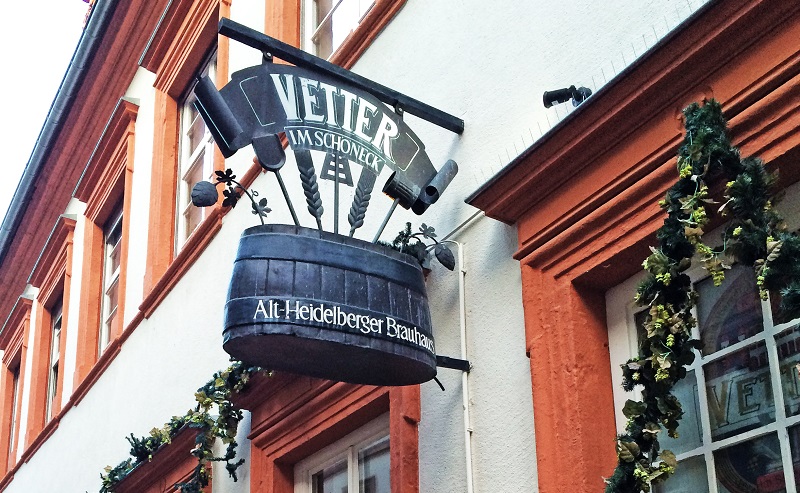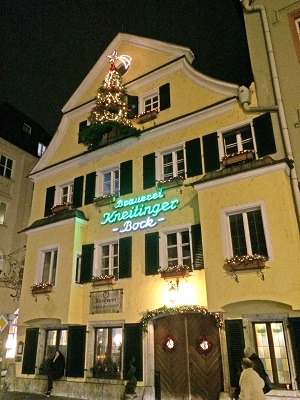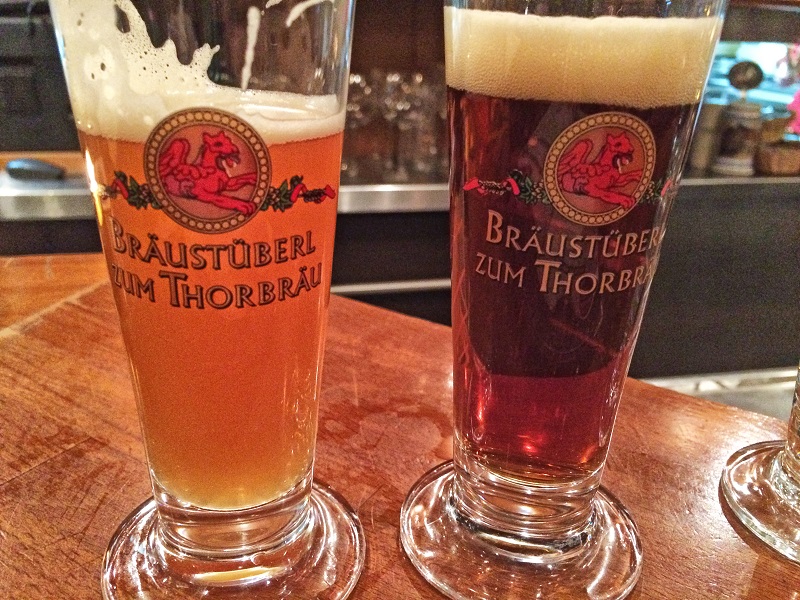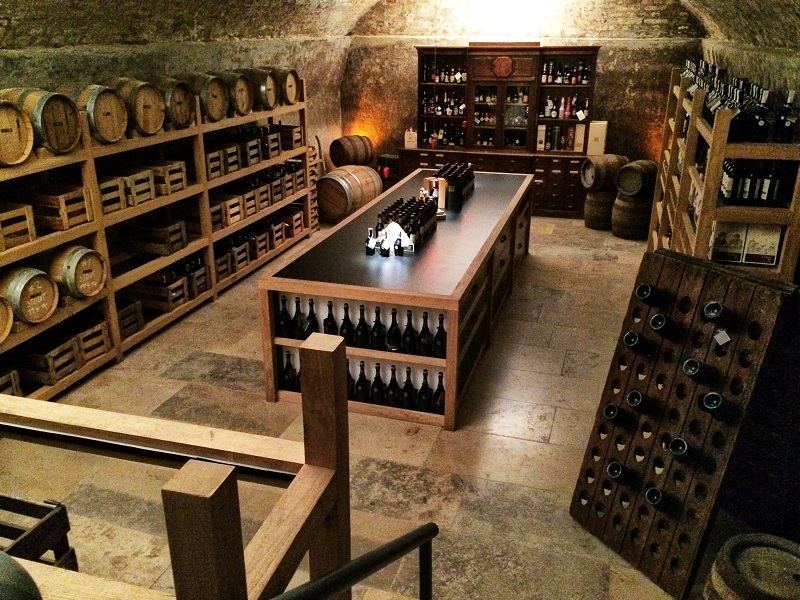The Reinheitsgebot Celebrates its Quincentennial
Few American brewers adhere to the Reinheitsgebot—the Bavarian Beer Purity Law of 1516 that to this day mandates, in order to be called “beer,” a brew can only consist of barley malt, hops and water (although it currently allows for wheat and, naturally, yeast). But 500 years on, the world’s oldest food law is alive and well in Germany. Although brewers acknowledge it limits their creativity, they greatly respect its tradition. There are 80 million Germans, and most wouldn’t drink beer any other way. (Well, there’s the über popular radler, but that’s OK since it’s a “mixed beer,” meaning lemonade is added after the proper beer is made.) Certainly, Germans don’t find that their beer suffers for it. With over 1,300 breweries, Deutschland still enjoys a higher brewery per capita figure than the U.S. So on the whole, that means tons of helles lagers, pilsners and weizens. Not to mention a fair amount of dunkels and bocks. And as I discovered when the German National Tourist Office brought me over to tour brauereis around Southern Germany, one doppelbock that briefly enjoyed some Guinness Book of World Records infamy as boasting the highest original gravity, that being Vetters 33.
Heidelberg, Baden-Württemberg
There are castle ruins nestled into a hillside that looms over this Baroque town situated on the Neckar River, which often ushers in a narrow band of fog. Heidelberg is a university town (and has been since 1386) and has long been a bastion of culture, including brewing. Though it once boasted some 40 breweries, there are only three today, starting with the oldest, Kulturbrauerei Heidelberg (Leyergasse 6) in the Altstadt, or Old Town. Although it is 50 years old, it’s a decidedly modern 15-hectoliter brewhaus run by braumeister Thomas Lamerz. He produces 15 beers annually, though, not surprisingly, the two most popular ones are the pils and the weizen. He is also fond of experimenting with contemporary hops from outside Germany’s vaunted Hallertau region, including Mosaic, Sorachi Ace and Southern Hemisphere varietals such as Nelson. So while he maintains many traditions in his brew house such as krausening (and recapturing the CO2, since the Reinheitsgebot frowns on force carbonating) beers like the Chocolate Porter (and it’s actually a bottom-fermented Baltic porter) smack of the 21st century.

Karl Theodor Bridge, Heidelberg (Photo courtesy HSVRS/iStock)
Across the Neckar and up the steep slope verdurous with vineyards, if you stroll down the Philosopher’s Walk (Goethe and Mark Twain have strolled here), you’ll arrive at the Neuburg Abbey, founded in 1130 and known locally as the Stift. It’s home to Brauerei zum Klosterhof (Stiftweg 4). Although a monastery nine centuries old seems like a place for conventional cloistral beers, it is simply the place where brewer Hans-Dieter Jesse and his partner set up shop in 2009. In addition to expected styles such as a blond, pils, wheat and dunkel, Jesse takes a progressive approach to brewing. Although he is required by the Bundesministerium für Gesundheit (Federal Ministry of Health) to adhere to the Reinheitsgebot, he’s always seeking ways to test the law’s perimeters or make beer that isn’t “beer” when necessary. See, the Purity Law only mandates what constitutes “beer.” Ale is something different to Bavarians. If his Hopfenfuchs (Hoppy Fox) beer, the first in Germany to use organic Cascades, isn’t bitter enough, he makes HeidALEberg India Pale Ale. Yes, it features Hallertau Perle and Tettnang, but take note of the candied orange peel accent the Mandarina Bavaria hops throw. And then there’s the barrel-aged strong ales Jesse already makes such as Ardbeg Whisky-aged imperial stout.

Vetter’s Alt Heidelberger Brauhaus (Photo by Brian Yaeger)
For my last beer stop in town, I had to pop into Vetter’s Alt Heidelberger Brauhaus (Steingasse 9) across the way. Yes there are doppelbocks where mostly light, easy-drinking beers rule the day, but in 1994, the aforementioned Vetters 33 achieved its original gravity of 33 degrees Plato after a 10-hour boil. No red flags in the context of the Reinheitsgebot. The result tastes like molasses-rich kvass. According to Michael Vetter, whose father opened the brewpub in 1987, the house favorite helles goes well with the grilled pork knuckles. The 33, only served 0.2 liters at a time, pairs perfectly with apple strudel for dessert.
Freiburg, Baden-Württemberg
Here, travelers should watch their step; every road has sunken torrents of water called bächle (little stream) along one side, and they’re no mere gutters. They lend great charm to the city streets splayed below the Black Forest, but the more weizen you drink, the more you’re apt to fall in. Bachelors and bachelorettes, keep in mind that as the story goes, if you step or fall into a bächle, you’ll marry a Freiburger.
The little creeks are a holdover from the 13th century, built for fire fighting and cleansing, but no doubt the irrigation aided this Upper Rhine city’s vineyards. There used to be five gates in this walled medieval city, but only two remain. Adjacent to Martin’s Gate you’ll find a Markthalle (food hall); the liquid center is a subterranean brewpub, Martin´s Bräu (Kaiser-Joseph-Strasse 237). The first thing that catches your eye at this family-friendly restaurant is the food prep area, which is definitely for the wurst. Don’t get excited about the bowl of greens next to the various meats; it’s just parsley for garnish. The copper kettles in the back, however, are not merely decorative. The house pils is lemon peel in color with a grainy pilsner malt base, dry yet honeyed flavor and a kick of lemon-pepper in the finish.
It’s Hausbrauerei Feierling (Gerberau 46) that is the main draw here, and I had the pleasure of meeting Martina Feierling-Rombach, the fourth-generation brewmaster. The brewery has been in her family since Julius Feierling founded it in 1877. Her daughter is already in training to become the fifth-generation brewer, and the Feierlings are essentially a legacy at Weihenstephan brewing program in Munich. Though they brew just over 400,000 liters of all-organic beer a year—choose among Inselhopf kellerbier subtly hopped with Tettnangers, Hefe-Weisse and a seasonal (I really enjoyed the faintly chocolaty autumnal bock brewed with Munich and Carafa malts)—they’ll only slake your thirst on premise, as they do not distribute. As Freiburgers have discovered, it’s a fantastic place for lunch or dinner as well, with locally sourced meats and even noodles made in house. The gleaming brew system sits at the center of the restaurant, but in actuality, their adjacent biergarten is the social center of Freiburg all summer long.
The packaging brewery, Brauerei Ganter (Schwarzwaldstrasse 43) requires a tram ride to reach, and it’s here where around a dozen beers are made. These include the best-selling pilsner triumvirate: Pils, Freiburger (less bitter, meaning 29 IBUs instead of 36 since as Herr Bayer explained, “young people don’t like bitter,” hence why they don’t attempt a DIPA), and my favorite, the unfiltered zwickelbier Urtrunk. But the most fascinating is Magisch Dunkel, a 5.8% dark lager with pumpernickel notes brewed each and every full moon. More than just predetermined brew dates, each occasion is accompanied by a festive procession with torches then a party replete with witches in the brew house culminating in a meal—and beers—in the dazzling steampunk-looking brew house from 1929 that’s no longer used.
Regensburg, Bavaria
If there was a theme to my trip beyond drinking the Bavarian Purity Law in action, it was visiting some of Southern Germany’s most beautiful riverside cities. Regensburg, the first fort in Bavaria—making it a UNESCO World Heritage city—is awash in charm thanks to the Regen and Danube rivers. Just over the Danube Bridge, in the shadow of the medieval cathedral, St. Catherine’s Hospital has morphed into a retirement home but the Spital Brauerei (St Katharinenplatz 1), which was part of the hospital (because beer has healthy, restorative properties!) since 1226, remains. And yes, the inhabitants still get free beer. The seniors, I’m told, only drink the traditional beers like the helles and the dunkel (that goes through a double decoction mash). But in 2013 the hospital added a much smaller brewery that produces small amounts of IPA (featuring Hallertau-grown Cascade, Mandarina Bavaria and Hercules hops, and also dry hopped with Simcoe) and a chocolate stout. It brews 7,500 hectoliters of the helles per year—half its total production—but only 90 hectoliters of the stout, and you can enjoy them all at the riverside Spitalgarten.

Brauerei Kneitinger (Photo by Brian Yaeger)
Walk back across the bridge and you’re greeted by Wurstkuchl, aka the Historical Sausage Kitchen (Thundorferstrasse 3). Yes, this is Germany and hence you’ll be up to your elbows in various wursts, but lunch here is a must. Keep in mind that the meal of six small-ish, charcoal-grilled bratwursts mit sauerkraut is the smallest plate you can get. And the place serves beer.
For a more upscale beer meal, visit Brauhaus am Schloss (Waffnergasse 6). Formerly the Princely Brewery belonging to Thurn und Taxis, Regensburg’s royal family who made their money in the postal service (and beer), it’s now a large restaurant that retains its gemütlichkeit (coziness). As is customary, the two copper kettles of the brewing system are the centerpieces of the restaurant behind the bar. The usual house beers—helles, dunkels, weizen—and a seasonal offering, which was the (doppel) bock that had a slight note of licorice and brown bread. It went great with my schweinsbrüstl (pork rind roast, meaning it’s got a flavorful, crispy layer). I’ll also interject, since there’s been mention of Thurn und Taxis, that their sprawling castle hosts the Romantic Christmas Market, one of four such holiday markets, which is a great reason to visit in December.
For additional local beers, Brauerei Kneitinger (Arnuifplatz 3) has been around since 1861 and, like the above mentioned breweries in Regensburg, donates its profits to charity: in this case a home for seniors and a youth center. It’s famous for its bock beer, and it makes a hearty wiener schnitzel. And Bischofshof (Heitzerstrasse 2), still owned by the bishop whose name it bears, was established in 1649. It excels at dunkels and doppelbocks, which have earned Bischofshof numerous awards, including gold medals at the World Beer Cup.
Augsburg, Bavaria

Thorbräu (Photo by Brian Yaeger)
The Schwaben (southwestern Bavaria) city of Augsburg, prized as the largest on the Romantic Road, made for a great end cap to my trip in part because I witnessed a gathering of Königstreuer—Bavarians who remain loyal to the (abolished) monarchy and do so in part by donning traditional garb—at Thorbräu (Wertachbrucker-Tor-Strasse 9). A good reminder that beer travel is as much social as it is about trying new (or in the case of Bavaria, old) beer. Since the brewery dates back to 1582, it’s as good a meeting place as any, especially since Augsburg passed its own beer purity law in 1156, predating the Reinheitsgebot by 360 years (and Munich itself by two years). When I spied patrons at Thorbräu’s pub quaffing their beers from a mass—a full liter—and asked what they thought about the quarter-liter stange glasses used for serving Kölsch in Cologne, they laughed. A mass is perfect for enjoying the light but flavorful kellerbier, the ripe-banana-accented weisse, the dunkel with notes of toffee or the sweetgrass-tinged pils.
The Brauhaus Riegele (Fröhlichtstrasse 26) may have been founded way back in 1386, but here I discovered Augsburger Herren Pils, the hoppiest, spiciest German-brewed pilsner I’ve ever encountered. The best-seller is the Festbier, which is also deliciously progressive. As the brewer Enzo Frauenschuh, a native Augsburger, reminded me, Riegele is the brewery that collaborated with Sierra Nevada Brewing Co. on the show-stopping Oktoberfest last year. You can try these and more when ordering a bierprobe (a tasting flight). Alas, what you won’t find on it are Riegele’s fantastic beers. The brewery produces 250,000 hectoliters a year in 220 hl batches, but it also runs an 80 hl craft brewery. It makes one of the finest German IPAs, called Simco 3, and since Frauenschuh loves the session IPAs he discovered in America, I wouldn’t be surprised if that’s next on the brew schedule (perhaps “Simco 1½”?). For fuller flavor, try Noctus 100, the velvety rich imperial stout, or pick up a bottle of Magnus 15, the phenomenal, affogato-laden, bourbon-aged stout—a bit of symbiosis since Sierra Nevada helped with its new barrel-aging program. Another sign that even in this land celebrating 500 years of pure beer, there’s something for every beer palate.

Brauhaus Riegle (Photo by Brian Yaeger)
Brian Yaeger
Brian Yaeger is the author of Red, White, and Brew: An American Beer Odyssey and Oregon Breweries.

Thanks for this article. There is one thing to add: the Hefe Weisse availiable in Feierling isn’t brewed by them. I is brewed in Lenzkirch (Black Forest) by Brewery Rogg and one of the very best Hefe Weizen you can get in the World